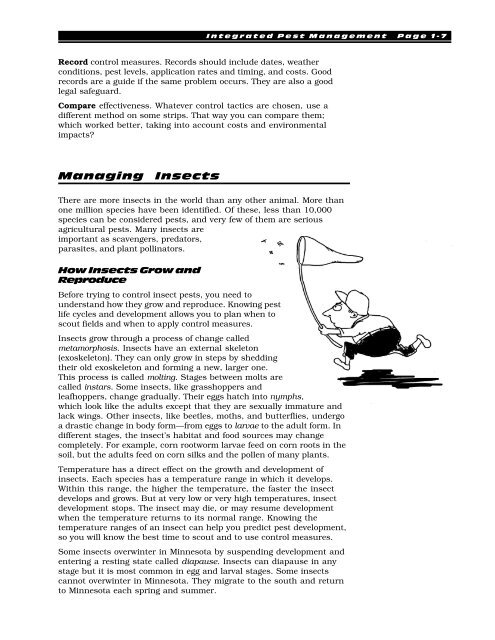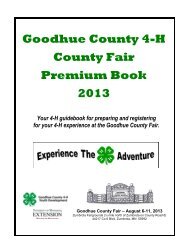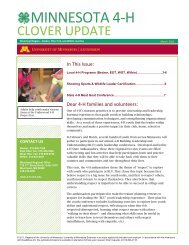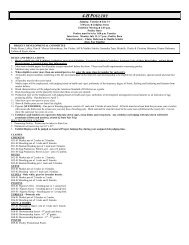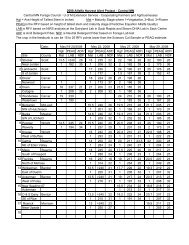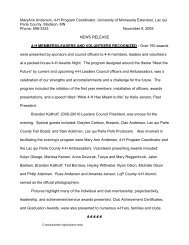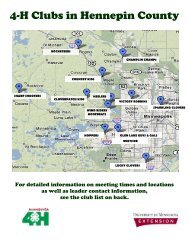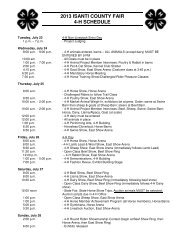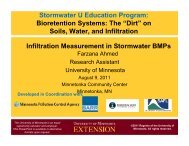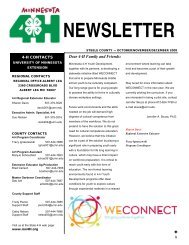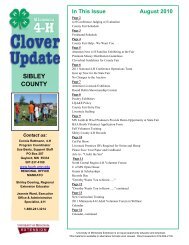Private Pesticide Applicator's Training Manual - University of ...
Private Pesticide Applicator's Training Manual - University of ...
Private Pesticide Applicator's Training Manual - University of ...
Create successful ePaper yourself
Turn your PDF publications into a flip-book with our unique Google optimized e-Paper software.
Integrated Pest Management Page 1-7<br />
Record control measures. Records should include dates, weather<br />
conditions, pest levels, application rates and timing, and costs. Good<br />
records are a guide if the same problem occurs. They are also a good<br />
legal safeguard.<br />
Compare effectiveness. Whatever control tactics are chosen, use a<br />
different method on some strips. That way you can compare them;<br />
which worked better, taking into account costs and environmental<br />
impacts?<br />
Managing Insects<br />
There are more insects in the world than any other animal. More than<br />
one million species have been identified. Of these, less than 10,000<br />
species can be considered pests, and very few <strong>of</strong> them are serious<br />
agricultural pests. Many insects are<br />
important as scavengers, predators,<br />
parasites, and plant pollinators.<br />
How Insects Grow and<br />
Reproduce<br />
Before trying to control insect pests, you need to<br />
understand how they grow and reproduce. Knowing pest<br />
life cycles and development allows you to plan when to<br />
scout fields and when to apply control measures.<br />
Insects grow through a process <strong>of</strong> change called<br />
metamorphosis. Insects have an external skeleton<br />
(exoskeleton). They can only grow in steps by shedding<br />
their old exoskeleton and forming a new, larger one.<br />
This process is called molting. Stages between molts are<br />
called instars. Some insects, like grasshoppers and<br />
leafhoppers, change gradually. Their eggs hatch into nymphs,<br />
which look like the adults except that they are sexually immature and<br />
lack wings. Other insects, like beetles, moths, and butterflies, undergo<br />
a drastic change in body form—from eggs to larvae to the adult form. In<br />
different stages, the insect’s habitat and food sources may change<br />
completely. For example, corn rootworm larvae feed on corn roots in the<br />
soil, but the adults feed on corn silks and the pollen <strong>of</strong> many plants.<br />
Temperature has a direct effect on the growth and development <strong>of</strong><br />
insects. Each species has a temperature range in which it develops.<br />
Within this range, the higher the temperature, the faster the insect<br />
develops and grows. But at very low or very high temperatures, insect<br />
development stops. The insect may die, or may resume development<br />
when the temperature returns to its normal range. Knowing the<br />
temperature ranges <strong>of</strong> an insect can help you predict pest development,<br />
so you will know the best time to scout and to use control measures.<br />
Some insects overwinter in Minnesota by suspending development and<br />
entering a resting state called diapause. Insects can diapause in any<br />
stage but it is most common in egg and larval stages. Some insects<br />
cannot overwinter in Minnesota. They migrate to the south and return<br />
to Minnesota each spring and summer.


